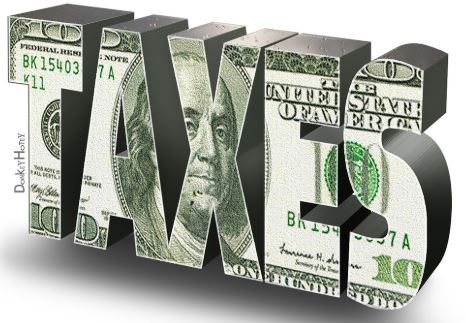 Let’s talk taxes. It’s said in the old parable that the only things that are certain are death and taxes. None of us are going to get out of this place alive, unless the world comes to an end, and we all have to pay taxes.
Let’s talk taxes. It’s said in the old parable that the only things that are certain are death and taxes. None of us are going to get out of this place alive, unless the world comes to an end, and we all have to pay taxes.
When considering taxes, all types, South Dakota is one of the most tax-payer friendly states in the United States. It’s one of 9 states without a state income tax. Sales taxes range from 4-1/2 cents for the state up to 6.5 % when including local rates. Of the non-income tax states; Alaska, Florida, Nevada, South Dakota, Texas, Washington, and Wyoming; New Hampshire and Tennessee don’t have income tax but do tax dividends earned and income from investments. So, the only bordering state that doesn’t have a state income tax is Wyoming. The advantages of a no-income tax state are many. In our district we have a large retired contingent. One of the reasons we do is because of not having a state income tax.
Most states have a three-legged stool regarding collecting taxes:
-
State Income Tax
-
Property Tax
-
Sales Tax
In SD, we have to rely on only property and sales taxes. Our state sales tax is 4.5 cents, of which the ½ cent is due back to its citizens once our eCommerce hits a hundred million in collections. In my opinion, we have been stalling on this option and for sure it will be a hot topic this next session. My prediction, if I have any say, is the ½ cent will go back to taxpayers as promised when the Partridge amendment was introduced to pass the ½ cent sales tax increase in 2016.
That takes us to property taxes. Marcia and I pay $3627.49 in property tax on our home. The breakout of where our tax dollars go is as follows:
Hill City School District $2176.28
West Dakota Water District 4.59
Hill city Fire District 128.58
Our Road District 176.60
Hill City Ambulance District 185.97
Fire Administration 16.28
Library 36.16
Pennington County 901.20
Pennington Fairgrounds $___3.83
$3629.44
Now one could argue that we have no children in school, so why the $2176.28? We should at

least be able to get into a ball game free versus someone who pays no property tax. We have our own well, so why the $4.59? The fire district cost of $128.58 is understandable, but why the $16.26 for Fire Admin? What does Admin do? Why isn’t it included in the Fire District cost?
Same for Pennington County. Why pay the $901.20 and also the $3.83 to the fairgrounds, which are owned and run by the county? All good arguments, but that’s not where I am going with this.
What I want to get changed is how property taxes are increased automatically without any elected officials voting on it! That shouldn’t be true, but it is! What I’m referring to is Controlled Consumer Price Indexing (CPI). The county can go back 3 years each year and increase your property taxes up to 3% based on CPI for a total of 9% per year. This is done, like I just mentioned, without a county commission vote.
I had a bill in 2017, HB-1151, that was designed to strike this capability. How did it go? Not good. It got beat in State and Local Government Committee 11 to 2. We had great testimony from west river, but had no east river support. So now what?
Rep. Taffy Howard from District 33 is heading a study group of legislators, of which I am one, to study property taxes. My goal is to take another run at this automatic controlled CPI without an elected official voting on it. Hopefully, this time we can get east river support, and we can put this in the hands of our elected officials and out of the hands of the bureaucrats.
To the citizens of District 30 and to the men and women in uniform, in honor of all who served, in respectful memory of all who fell, and in great appreciation to those who serve today, Thank You, for giving me the opportunity to serve you.

 Let’s talk taxes. It’s said in the old parable that the only things that are certain are death and taxes. None of us are going to get out of this place alive, unless the world comes to an end, and we all have to pay taxes.
Let’s talk taxes. It’s said in the old parable that the only things that are certain are death and taxes. None of us are going to get out of this place alive, unless the world comes to an end, and we all have to pay taxes.



The question: Why should I pay school taxes if I don’t have kids in school? This is the question asked by the “I got mine, screw you” group. It is very expensive to educate a child and most parents could not afford it. The system spreads the cost over all citizens. When Tom Goodwin was a child, other people with no children helped his parents educate him. If/when he had children in school, other people who did not have children in school helped him. Now that it is his turn to help others, he says STOP.